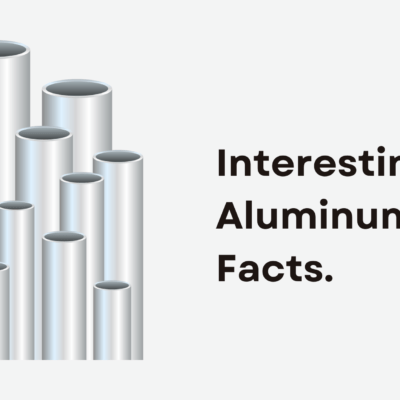Interesting Aluminum Facts: Aluminum is a captivating and adaptable metal that holds several interesting facts. It is the most plentiful metal in the Earth’s crust, making up about 8% by weight. Despite its majority, it wasn’t isolated as an element until 1825 by Danish physicist and chemist Hans Christian Ørsted. The name “aluminum” is derived from the Latin word “alumen,” meaning “alum” or “bitter salt.” Here are a few interesting facts about Aluminum:
Also Read:
- Liz Murray interesting facts.
- Fun Tuesday facts.
- Interesting facts about Shakespeare.
- Wonderful facts about Trees.
- Interesting facts about Dominican republic.
- Interesting facts about science.
Aluminum Interesting Facts
- Aluminum is a chemical element with the symbol Al and atomic number 13.
- It is a silvery-white, lightweight metal with a low density.
- Aluminum has excellent corrosion resistance due to the formation of a protective oxide layer on its surface.
- It is highly malleable and ductile, making it easy to work with in various applications.
- Aluminum is the third most abundant element in the Earth’s crust, after oxygen and silicon.
- It makes up about 8% of the Earth’s crust by weight.
- Aluminum was first isolated in its metallic form in 1825 by Danish physicist and chemist Hans Christian Ørsted.
- The name “aluminum” is derived from the Latin word “alumen,” meaning “alum” or “bitter salt.”
- In the United States, the term “aluminum” is more commonly used, while in most other English-speaking countries, “aluminum” is the preferred spelling.
- Aluminum has a relatively low melting point of 660.32°C (1220.58°F).
Aluminum interesting facts
- It is an excellent conductor of electricity, second only to copper among commonly used metals.
- Aluminum is highly reflective and is often used in applications such as mirrors and reflective coatings.
- The metal is non-toxic, which makes it suitable for food and beverage packaging.
- Aluminum has a high strength-to-weight ratio, making it ideal for lightweight applications like aerospace components.
- The aluminum beverage can be introduced commercially in 1959.
- Recycling aluminum requires only about 5% of the energy needed to produce it from raw materials, making it one of the most recyclable metals.
- Aluminum is used extensively in the construction industry for windows, doors, facades, and structural components.
- The Washington Monument in the United States is capped with an aluminum pyramid at its apex, making it the largest aluminum structure in the world.
- The Empire State Building, constructed in 1931, was the tallest in the world at the time and used aluminum extensively for its decorative spire and other components.
Interesting fact about aluminum
- Aluminum alloys are used in modern aircraft construction due to their strength and low weight, which contribute to fuel efficiency.
- The first transatlantic flight in 1919 used an aircraft made predominantly of aluminum.
- Aluminum foil was first produced in 1910 and became commercially available in 1913.
- Aluminum foil is not only used for wrapping food but also in various industrial applications, such as insulation and capacitors.
- Aluminum is resistant to magnetic fields, making it suitable for housing sensitive electronic equipment.
- The world’s largest aluminum smelter is the EMAL complex in the United Arab Emirates, with a capacity of around 1.3 million metric tons per year.
- Aluminum can be alloyed with other elements to create specific properties for various applications, such as aluminum-copper alloys (duralumin) used in aircraft construction.
- Aluminum is used in the automotive industry to reduce vehicle weight, thus improving fuel efficiency and reducing emissions.
- The aluminum industry employs hundreds of thousands of people worldwide and contributes significantly to the global economy.
- Bauxite is the primary source of aluminum, and the largest reserves of bauxite are found in countries like Guinea, Australia, and Brazil.
Aluminum interesting facts
- Aluminum powder is used in pyrotechnics, as a component of explosive mixtures in fireworks.
- Aluminum-based compounds are used in antiperspirants to reduce sweating.
- Alumina (aluminum oxide) is used in the production of ceramics, refractory materials, and abrasives.
- Aluminum is resistant to rust, making it suitable for outdoor applications in various weather conditions.
- Aluminum is used in electrical transmission lines to reduce the weight of the cables and minimize sag.
- Aluminum hydroxide is used as an antacid to neutralize stomach acid.
- Aluminum powder is used in some paints and coatings to provide a metallic appearance.
- Aluminum alloys have become popular in the automotive industry to reduce vehicle weight and improve fuel efficiency.
- The Hall-Héroult process, developed in the late 19th century, revolutionized the production of aluminum and is still used today.
- The aluminum industry has made significant progress in improving the sustainability of its operations and minimizing environmental impact.
- The London Metal Exchange (LME) is one of the world’s major trading platforms for aluminum and other metals.
Aluminum interesting facts
- Aluminum is commonly used in heat exchangers and radiators due to its excellent thermal conductivity.
- The Statue of Liberty is made primarily of copper, but the torch was replaced with an aluminum one in 1986 as part of its restoration, due to aluminum’s durability and low weight.
- Aluminum nanoparticles are being researched for potential applications in medicine and drug delivery systems.
- In the early 20th century, aluminum was considered a precious metal, and aluminum objects were displayed alongside silver and gold items.
- Aluminum is used in the manufacturing of solar panels due to its corrosion resistance and ability to reflect sunlight.
- The aluminum industry is continuously developing new alloys and manufacturing techniques to improve the properties and performance of aluminum products.
- Aluminum is used in modern high-speed trains to reduce weight and improve energy efficiency.
- In 1884, French engineer Paul Héroult independently developed a process for extracting aluminum from alumina, which is similar to the Hall-Héroult process.
- The aluminum used in everyday products and applications is often in the form of aluminum alloys, which combine aluminum with other metals to enhance specific properties.
- Aluminum has a wide range of applications, from everyday household items to advanced aerospace technology, and continues to be a fundamental metal in modern society.



